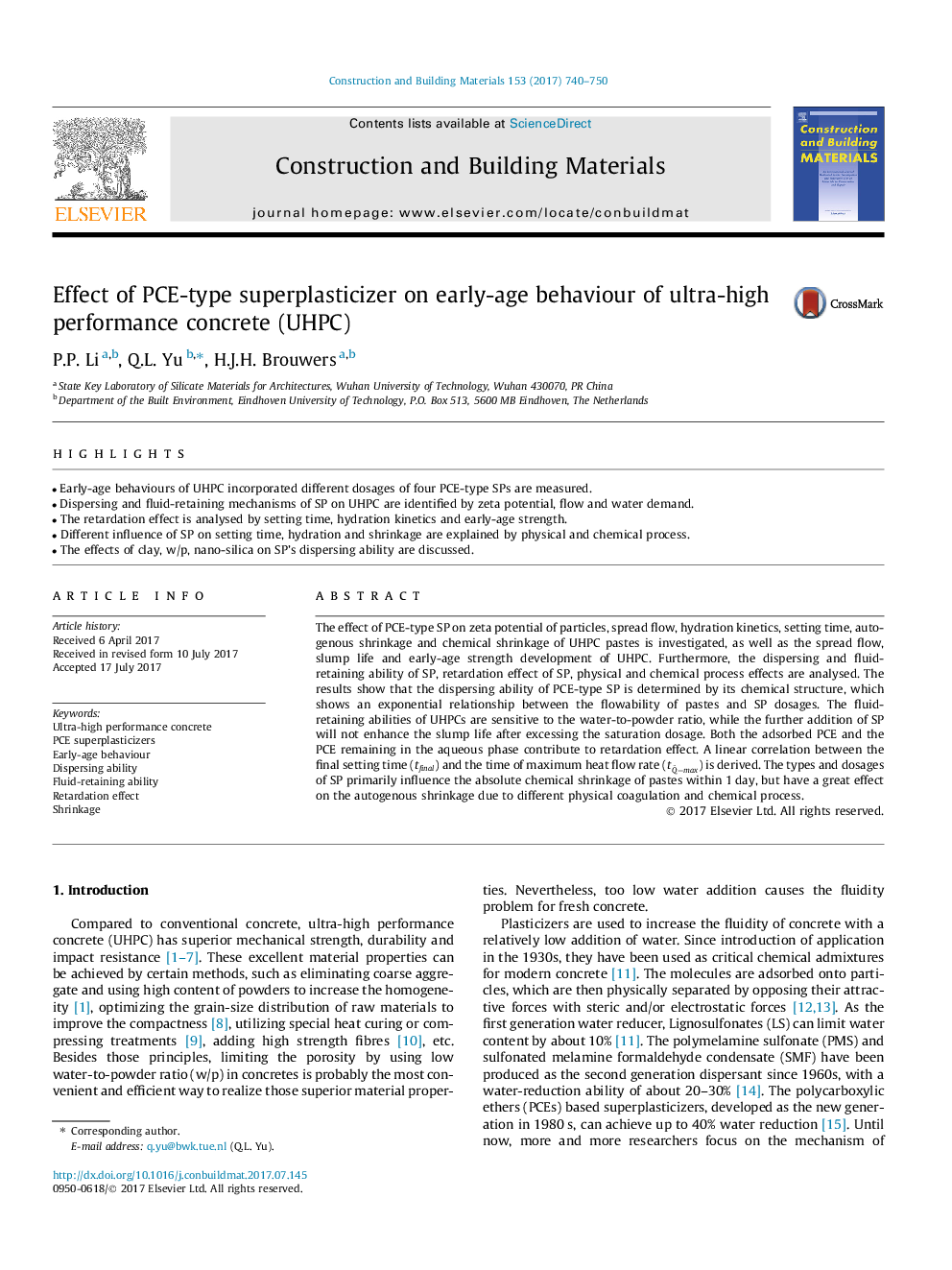| Article ID | Journal | Published Year | Pages | File Type |
|---|---|---|---|---|
| 4913019 | Construction and Building Materials | 2017 | 11 Pages |
Abstract
The effect of PCE-type SP on zeta potential of particles, spread flow, hydration kinetics, setting time, autogenous shrinkage and chemical shrinkage of UHPC pastes is investigated, as well as the spread flow, slump life and early-age strength development of UHPC. Furthermore, the dispersing and fluid-retaining ability of SP, retardation effect of SP, physical and chemical process effects are analysed. The results show that the dispersing ability of PCE-type SP is determined by its chemical structure, which shows an exponential relationship between the flowability of pastes and SP dosages. The fluid-retaining abilities of UHPCs are sensitive to the water-to-powder ratio, while the further addition of SP will not enhance the slump life after excessing the saturation dosage. Both the adsorbed PCE and the PCE remaining in the aqueous phase contribute to retardation effect. A linear correlation between the final setting time (tfinal) and the time of maximum heat flow rate (tQ¨=max) is derived. The types and dosages of SP primarily influence the absolute chemical shrinkage of pastes within 1 day, but have a great effect on the autogenous shrinkage due to different physical coagulation and chemical process.
Related Topics
Physical Sciences and Engineering
Engineering
Civil and Structural Engineering
Authors
P.P. Li, Q.L. Yu, H.J.H. Brouwers,
